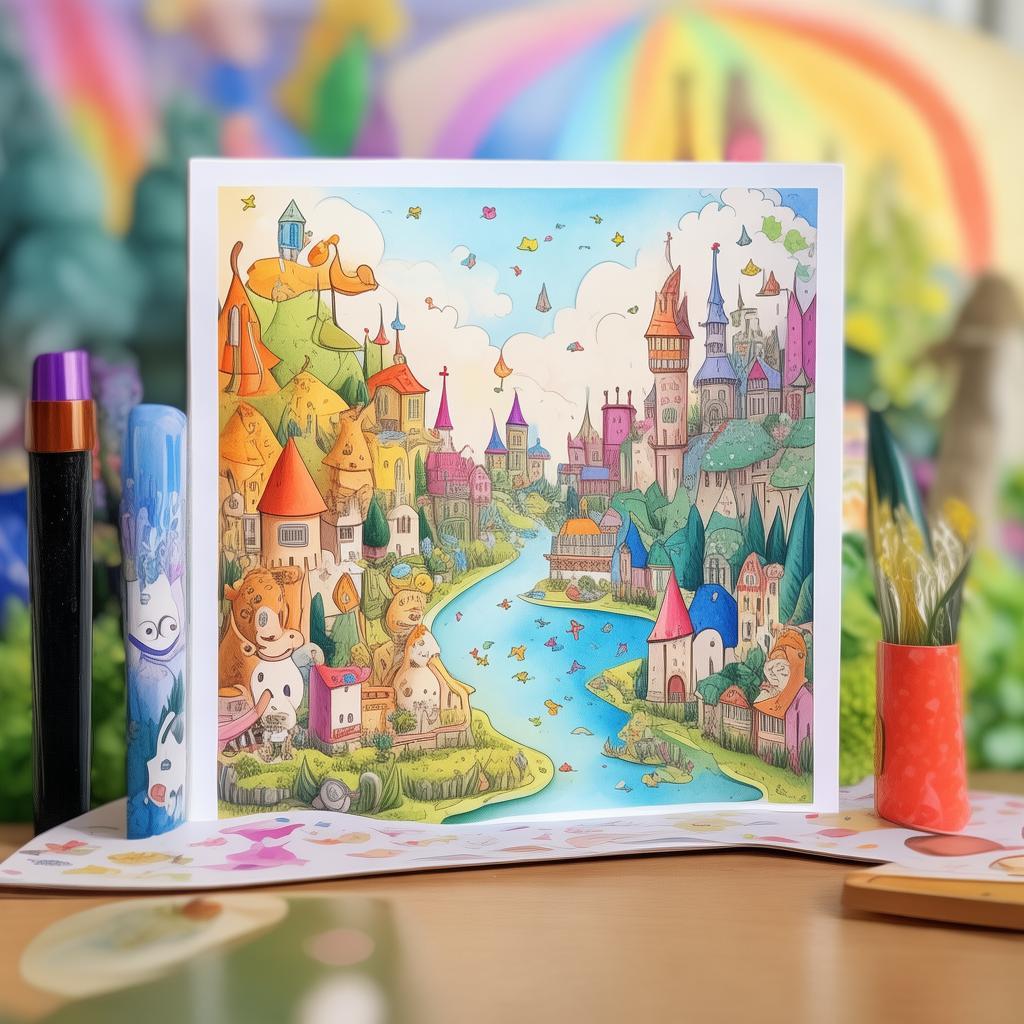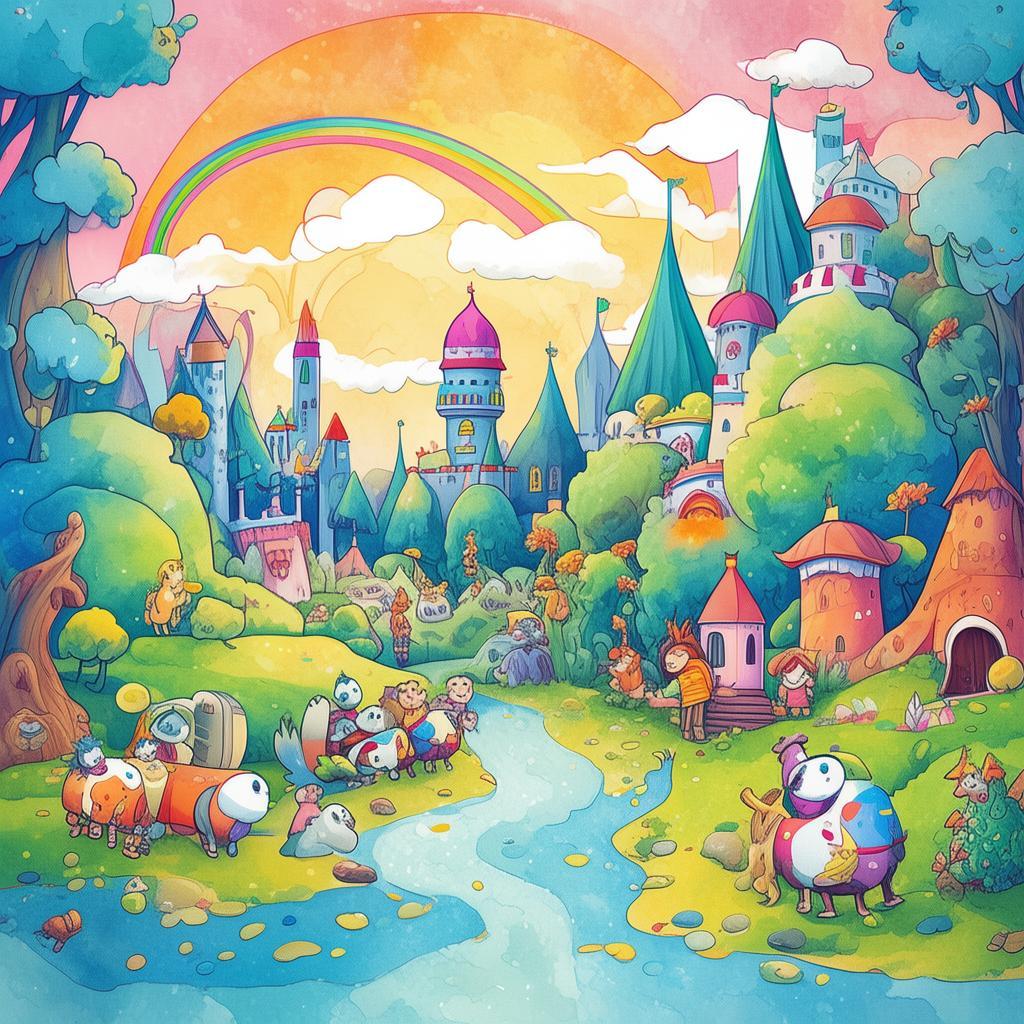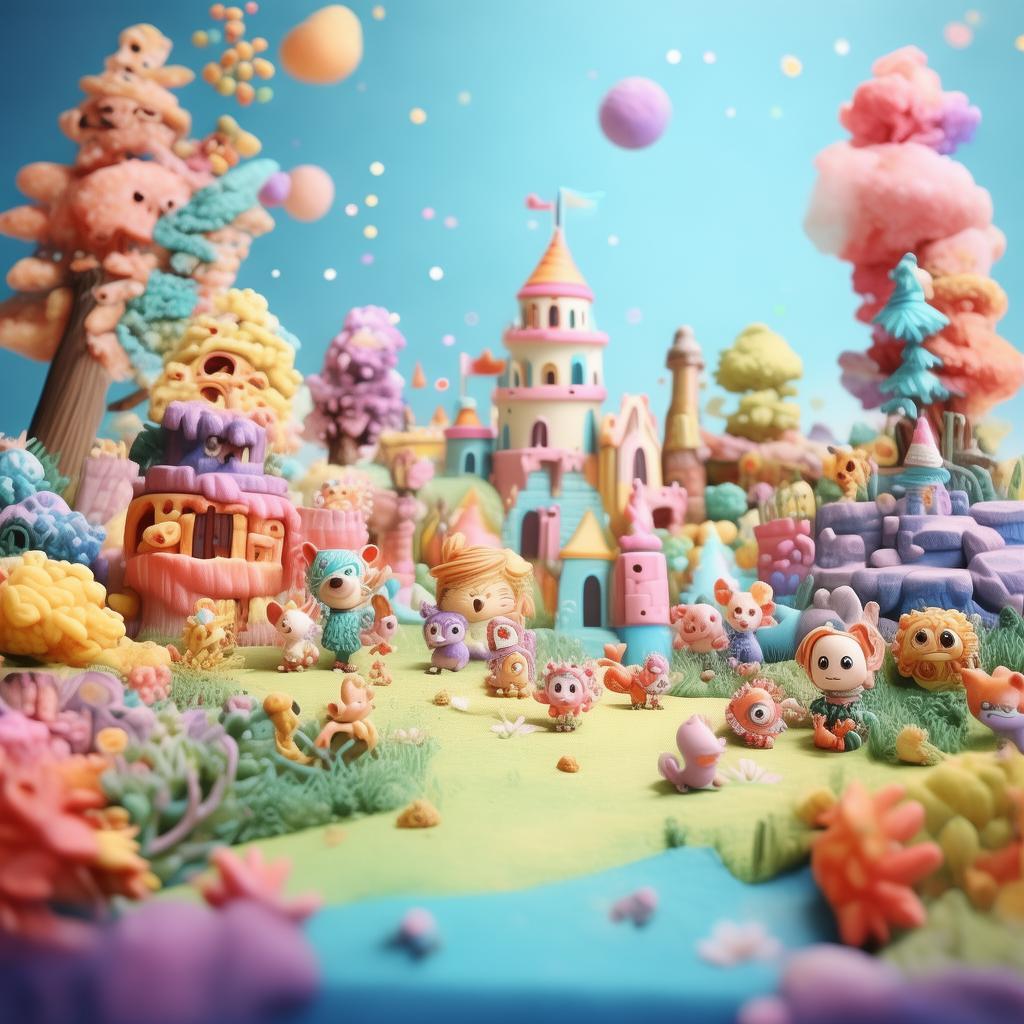The Cosmic Quest of Little Luna
Once upon a time, in the vast expanse of space, there was a little moon named Luna. Luna was no ordinary moon; she was a tiny, curious satellite orbiting around the magnificent planet Earth. Luna had always been fascinated by the stars twinkling in the night sky and the endless possibilities that lay beyond her home.
One bright morning, as Luna gazed up at the sun, she made a remarkable discovery. A shimmering, golden trail stretched across the sky, leading far beyond Earth. "What is that?" Luna wondered aloud, her eyes wide with wonder. She couldn't help but feel an overwhelming urge to explore this mysterious trail.
With a determined bounce in her step, Luna set off on her cosmic quest. Her journey began with a close encounter with the fiery planet Mars. Mars was a red giant, its surface covered in rocky terrain and dust storms. Luna marveled at the red, swirling sands and the towering volcanoes that stood like giants in the Martian landscape. She learned that Mars once had water, and now, it was a dry, barren world.
Next, Luna visited the gaseous giant Jupiter. The planet was a swirling mass of colors, with clouds so thick and high that they formed Great Red Spot, a colossal storm that had been swirling for centuries. Luna was awestruck by Jupiter's immense size and the beauty of its swirling clouds. She learned that Jupiter is the largest planet in our solar system, and it has a powerful gravity that could crush a spacecraft.
As Luna ventured further, she reached the icy world of Saturn. The planet was adorned with a majestic ring system, a dazzling array of rocks and ice particles that circled Saturn like a crown. Luna was enchanted by the delicate beauty of the rings and the intricate patterns they created. She learned that Saturn's rings were made of debris left over from the formation of the solar system.

Next on her list was Uranus, the tilted planet. Uranus rotated on its side, giving it an unusual appearance. Luna was fascinated by its blue-green hue and the swirling clouds of methane that encircled the planet. She learned that Uranus is the only planet in our solar system that rotates on its side, a result of a collision with another planet billions of years ago.
Neptune, the farthest known planet from the sun, awaited Luna's arrival. The planet was a deep blue, with a faint glow from its methane clouds. Luna was in awe of Neptune's massive storm, the Great Dark Spot, which was similar to Jupiter's Great Red Spot but even larger. She learned that Neptune is the windiest planet in our solar system, with winds that can reach speeds of up to 1,200 miles per hour.
Finally, Luna reached the dwarf planet Pluto. Once considered the ninth planet, Pluto is now known as a dwarf planet, a smaller body that orbits the sun. Luna was intrigued by Pluto's icy surface and the mountains of water ice that rise up from it. She learned that Pluto has a complex atmosphere, made up of nitrogen, methane, and carbon monoxide.
Throughout her journey, Luna learned about each planet's unique features, from their atmospheres to their moons. She discovered that the solar system was a vast, interconnected network of planets, moons, and asteroids, each playing a vital role in the grand cosmic dance.
As Luna orbited back to Earth, she couldn't help but feel a sense of pride and accomplishment. She had traveled across the solar system, discovering the wonders of each planet and learning about their mysteries. But as she gazed up at the stars, she realized that the greatest secret of all was yet to be uncovered.
Back on Earth, Luna shared her incredible journey with her friends. They were amazed by the tales of her adventures, and they too were inspired to explore the wonders of space. Luna knew that her journey was just the beginning, and that the solar system held many more secrets waiting to be discovered.
And so, Little Luna continued to orbit Earth, her heart full of wonder and her spirit eager for new adventures. She had become a symbol of curiosity and discovery, inspiring children everywhere to dream big and explore the endless possibilities of the universe.
The Cosmic Quest of Little Luna was not just a story of adventure; it was a tale of courage, discovery, and the enduring power of curiosity. It taught children that the world is full of wonders, and that with a little imagination and determination, they could achieve the impossible.
✨ Original Statement ✨
All articles published on this website (including but not limited to text, images, videos, and other content) are original or authorized for reposting and are protected by relevant laws. Without the explicit written permission of this website, no individual or organization may copy, modify, repost, or use the content for commercial purposes.
If you need to quote or cooperate, please contact this site for authorization. We reserve the right to pursue legal responsibility for any unauthorized use.
Hereby declared.









